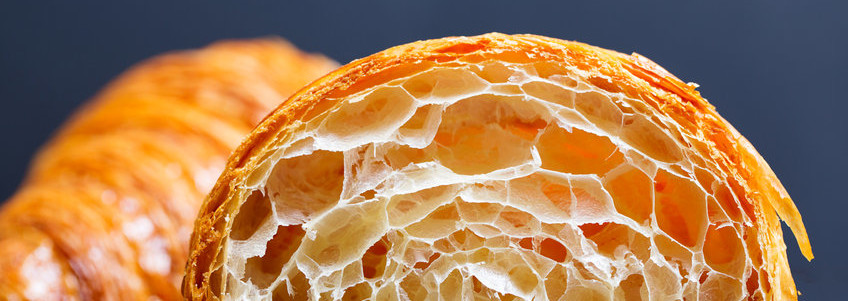
There’s nothing quite like a well-baked croissant: the airy texture, the subtle flavors, the melt-in-your-mouth layers…delicious! However, as any pastry chef will tell you, croissant production must be done just right, especially when you’re producing them on a high speed line.
What’s the secret to a beautifully flaky croissant?
Two things key things are happening:
- Lamination: a folding process creates alternating dough and fat layers
- Expansion: caused by the leavening action of yeast fermentation, and physical separation of the dough and fat layers during the oven spring stage of baking as the water trapped between them vaporizes to steam
Here are a few production tips:
- Mealy dough is made by blending fat and flour. This method of fat distribution though the dough retards water absorption.
- Dough relaxation time is important to allow easier sheeting and lamination.
- Dough chilling is important in maintaining fat crystals that results in the flaky texture.
- Fats used for lamination should have a higher melting point.
Typical croissant formula
| Ingredients | Baker’s % |
| Bread flour (white) | 100.0 |
| Liquid milk (scalded and cooled) or water | 58.0 |
| Yeast (osmotolerant instant dry) | 1.5 |
| Sugar | 6.0 |
| Salt | 2.2 |
| Fat (melted/softened butter) | 10.0 |
| Total | 177.7 |
| Butter or margarine for roll-in | 25.0* |
*The standard quantity of roll-in fat for croissant is 25% based on total dough weight.

